To see Rome properly, you need several days, maybe even a week. Cruisers don’t have that privilege, however. Cruise lines that advertise the Eternal City on their itineraries don’t actually dock in the non-coastal Italian capital, but in Civitavecchia, a port city located 43 miles northwest of Rome. Despite the distance, and the short time allotted to cruisers in Rome (usually one day), it’s possible to see the highlights of the city in five hours or less.
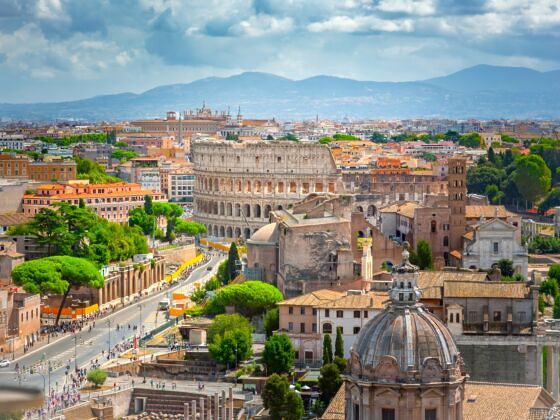

How to See All of Rome’s Highlights on a One-Day Walking Tour
How to get to Rome from Civitavecchia?
There are multiple ways to get from Civitavecchia to the center of Rome:
- There are trains, including high-speed ones, operating very regularly between the two cities. The ride takes between 50 minutes and one hour, but you have to get to the train station from the ship, which will require a taxi or Uber ride.
- You can book a taxi or Uber to get there and back, but it’ll cost you big. There are many companies offering shuttles (shared or private) that can be booked in advance for a more reasonable rate.
- The most secure way to get to Rome and back, however, is to book the transfer between the two cities as an excursion via your cruise line. A bus will pick you up, along with dozens of other passengers, as you exit the ship and drop you off in the heart of the city after a 90-minute ride. A guide will accompany you during the journey and provide you with a map and their phone number in case of emergency, but you’ll be left alone to explore for the entire day. The guide will also give you a meeting point for the journey back to the ship, and make every effort to find you if you don’t show up, so you’re sure not to miss the crucial all-aboard time. The price of a such a bus transfer is usually much cheaper than a privately booked shuttle.
A free walking tour of Rome to see all the highlights
A walking tour that shows the highlights of Rome does not allow for hours spent at each location. That means that if you want an in-depth visit of the Colosseum or the Vatican Museum and you only have one day, you should book your ticket/tour well in advance and focus all of your time at that particular site. Then, if you have any time remaining, try to see a couple more monuments from the streets by using the map below.
Cruise line transfers often drop guests at Circus Maximus or Piazza del Popolo, both of which can be used as starting points for this walking tour. If your bus transfer drops you elsewhere, it’s extremely likely to be close to points on the following walking itinerary so you can join in easily. For the purpose of this map, I used Piazza del Popolo as the starting point.
The map and walking tour detailed below only offer suggestions made from my personal experience of multiple on-day trips in Rome; you can tailor it to your preferences, time on site, and walking abilities.
Starting and ending point: Piazza del Popolo
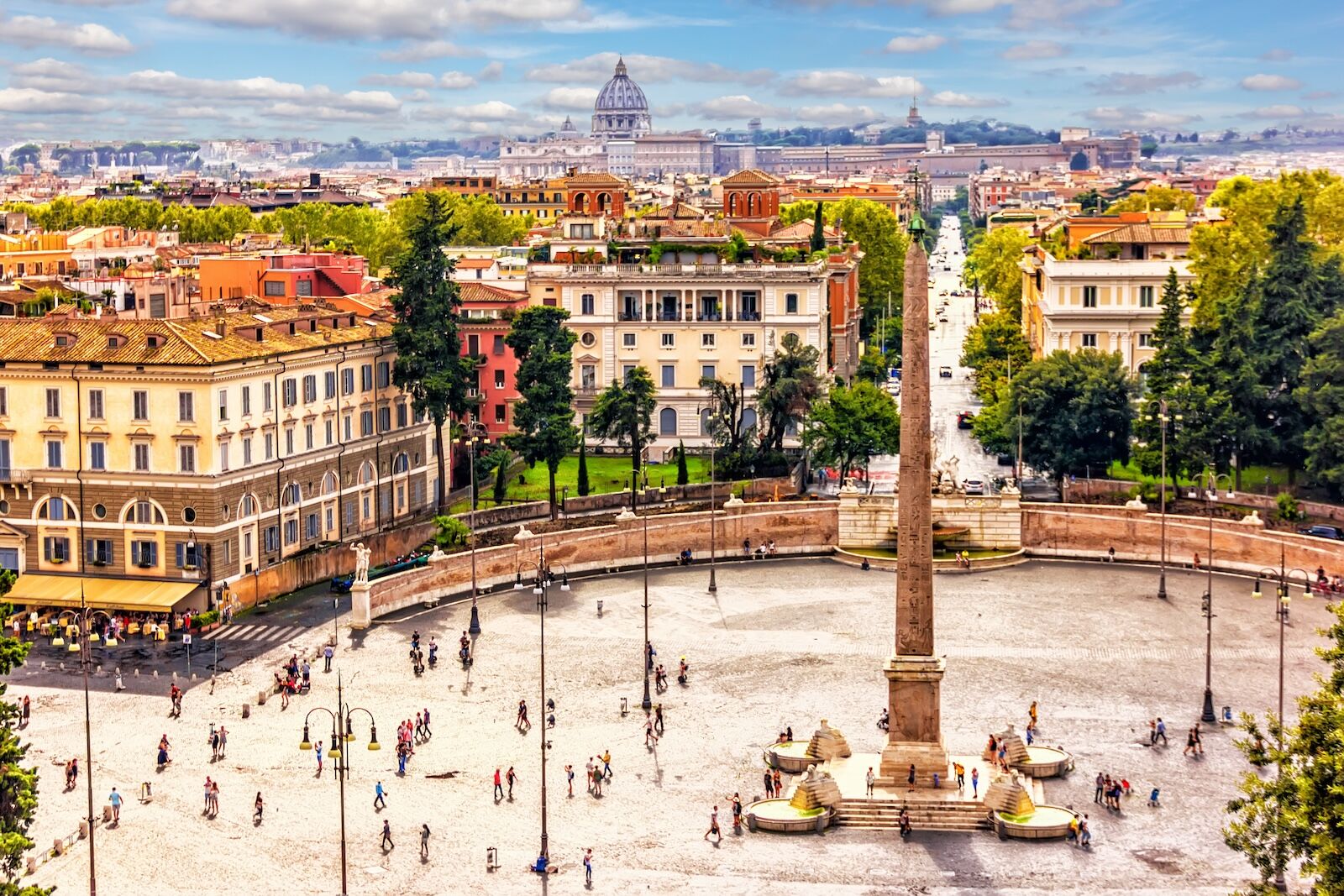
Photo: AlexAnton/Shutterstock
Piazza del Popolo (People’s Square) is a large pedestrian square that is located in the heart of Rome. A monumental Egyptian obelisk marks the center of Fontana dei Leoni (Fountain of the Lions) and its four basins, as well as the center of the piazza itself. Benches are situated around the fountain for passersby to take a seat and partake in some people watching.
Just above Piazza del Popolo, up a steep marble staircase, are the Villa Borghese Gardens, whose tall trees provide a welcome respite from the Italian sun. Terrazza de Pincio (Pincio Terrace), located on the edge of the gardens, offers gorgeous views of the piazza and the surrounding area. After taking in the cityscape, walk the paths that meander further into the leafy gardens and check out the unusual 19th-century water clock. Note that there is a public bathroom near Terrazza de Pincio, one of the few in Rome’s center. You need to have €2 ($2.10) in cash to use the facilities but they are clean and a lifesaver if you’re desperate.
Piazza di Spagna, Spanish Steps, and the Church of Trinità dei Monti
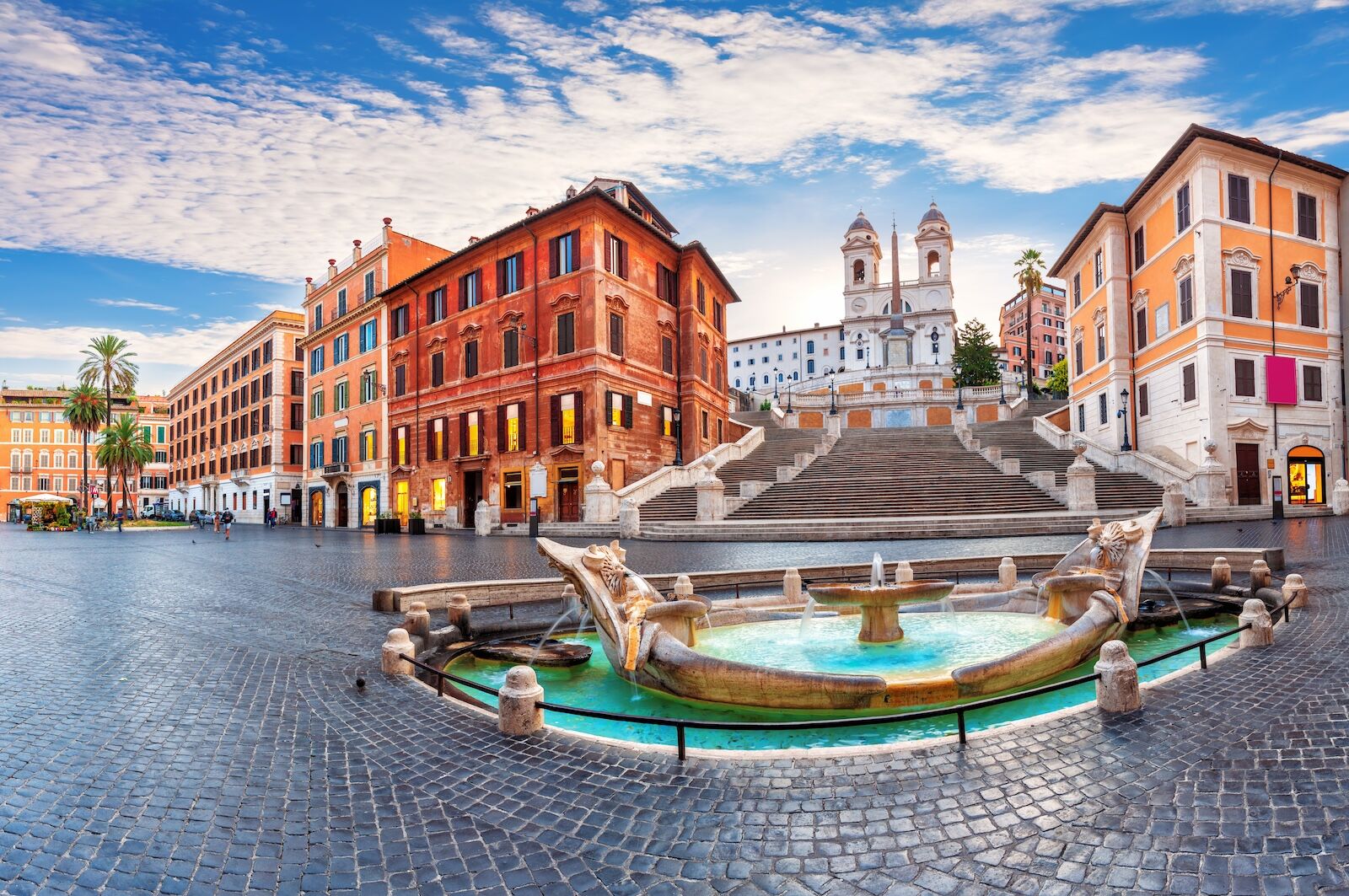
Photo: AlexAnton/Shutterstock
Just seven minutes from Piazza del Popolo is Piazza di Spagna, with its 17th-century Baroque-style fountain that resembles a sinking boat. Piazza di Spagna is the starting point of the famous Spanish steps, which you can climb to go all the way up to the Church of Trinità dei Monti from where the view is extraordinary. The luxurious Hassler Hotel, located steps away from the Church of Trinità dei Monti, arguably has the best location in the city.
Trevi Fountain, Column of Marcus Aurelius, and the Church of St. Ignatius of Loyola
Six minutes from the Spanish Steps is the most famous fountain in the world: the 85-foot-tall Trevi Fountain. Like every big site in Rome, visiting early in the morning offers the best chance to see the monument without crowds, but if you can’t be there at 7 AM, you’re just going to have to make do. Line up among the hundreds of others to reach the basin and throw a coin (or two, or even three) in its water. The sight is impressive and worth the wait.
Just four minutes away is Piazza Colonna, named as such for the immense Column of Marcus Aurelius located in its center. It’s a quick and easy sight but it warrants a detour.

The ceiling of the Church of St. Ignatius of Loyola. Photo: essevu /Shutterstock
Next up, after a three-minute walk, is the Church of St. Ignatius of Loyola, one of Rome many catholic sites, but one that you’d be remiss to pass on. It’s free to enter and walk around the see the various chapels. Take a seat in a pew to rest your legs if need be. The painted ceiling is the most impressive part of the church and you can line up and pay €1 ($1.05) to see it through a mirror and take a selfie. But, if you’re cheap like me, just crane your neck for a few minutes, it’ll do the job. The false painted dome, which nowadays doesn’t fool visitors, is a fun sight.
Monument to Victor Emmanuel II and the Basilica Santa Maria in Aracoeli
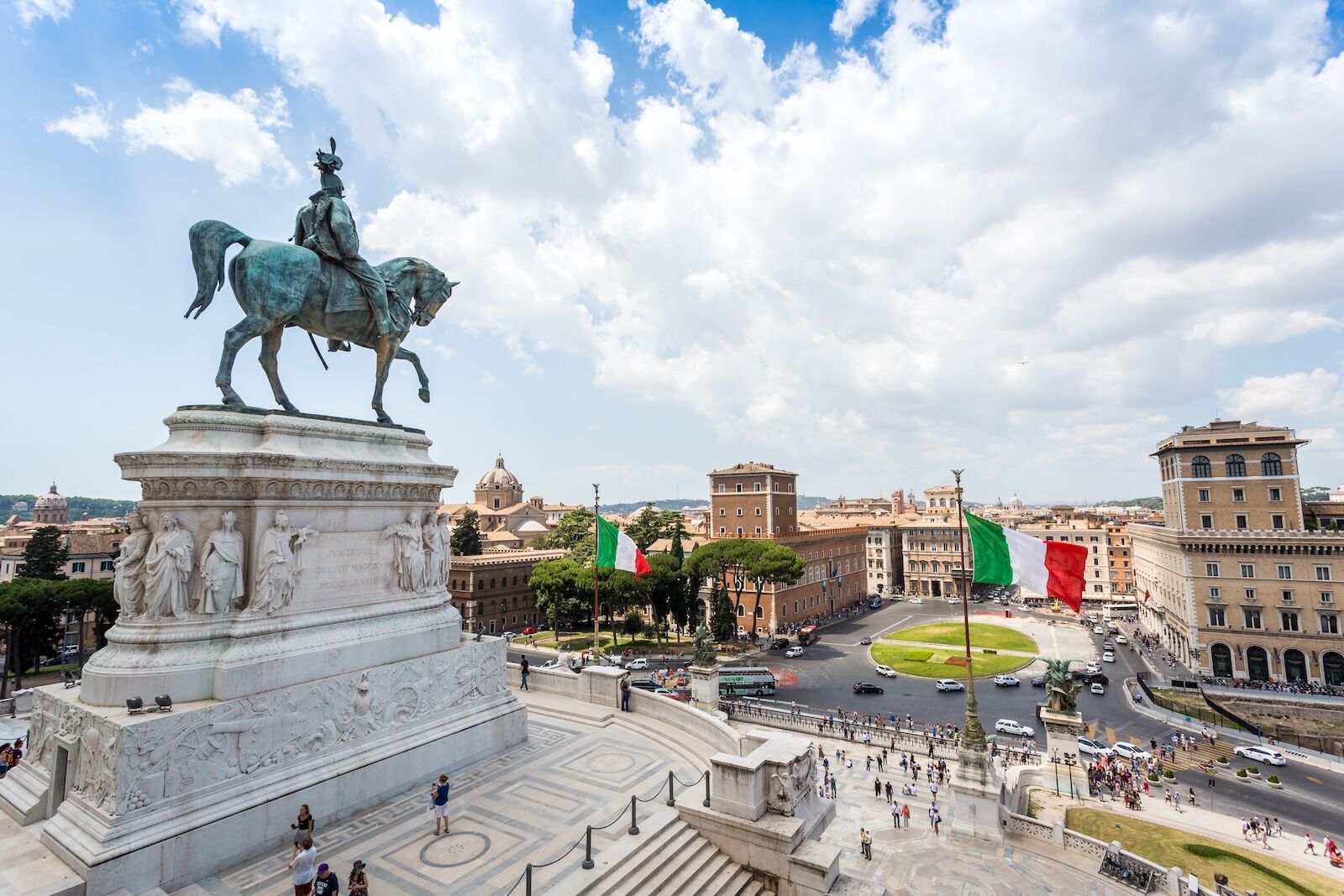
Photo: Sopotnicki/Shutterstock
A 15-minute walk from the the Church of St. Ignatius of Loyola is the Monument to Victor Emmanuel II, the first king of unified Italy. The site, finished in 1935, is huge and a bright shade of white, immediately catching the eye of passersby. The gigantic equestrian statue of Victor Emmanuel II in front of it is equally impressive.
Just behind the Monument to Victor Emmanuel II, up a steep, 124-step marble staircase, is the Basilica Santa Maria in Aracoeli. It is free, and highly recommended, to enter and take a look inside this beautiful sacred edifice whose origins date back to the sixth century.
Roman Forum, Colosseum, and Circus Maximus
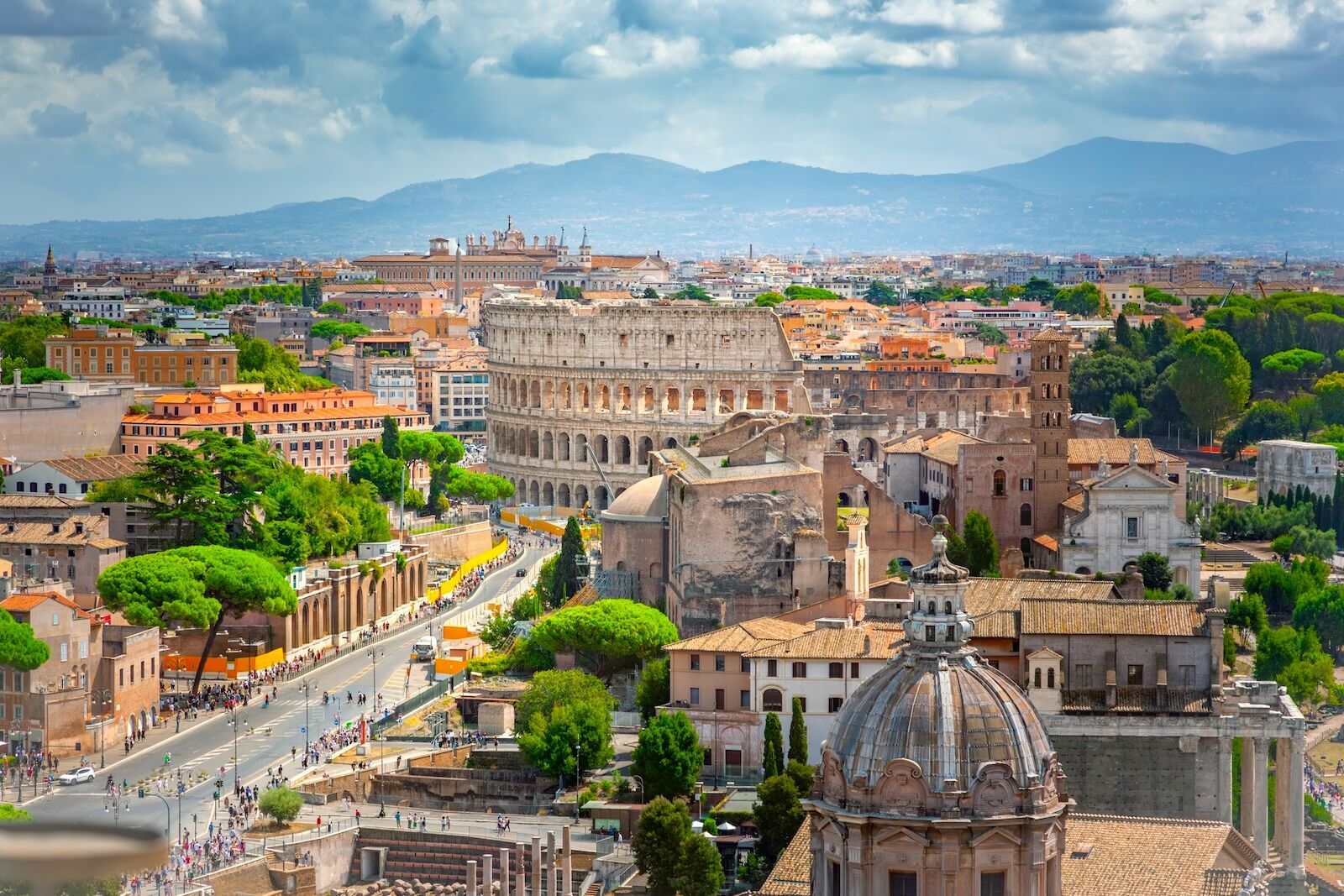
Photo: Adisa/Shutterstock
The Roman Forum (the center of life in ancient Rome), the Colosseum (amphitheatre), along with Palatine (the oldest part of the city of Rome) can all be visited on one ticket purchased in advance; however, if you don’t want to spend the entire day there, you can partially see all three from the streets. The Roman Forum can be seen quite easily from Via dei Fori Imperiali, the Colosseum is so large that it’s unmissable from this area, and from Circus Maximus, you’ll be able to see the side of the palace on Palatine Hill. The Roman Forum is located five minutes on foot from Basilica Santa Maria in Aracoeli, while the walk between the Roman Forum, the Colosseum, and Circus Maximum takes around 20 minutes.
The cats at Largo di Torre Argentina and the Pantheon
The walk from Circus Maximus to Largo di Torre Argentina takes about 20 minutes. Largo di Torre Argentina is an archeological site home to the remains of four ancient Roman temples, and the site of Jules Cesar’s assassination in 44 BC. Since the site’s excavation in the 1920s, cats have settled there, and Largo di Torre Argentina is now a cat sanctuary home to 150 cats who are fed and taken care of by a charitable organization. As of yet, visitors can only see Largo di Torre Argentina (and the cats) from the streets and from behind low barriers.
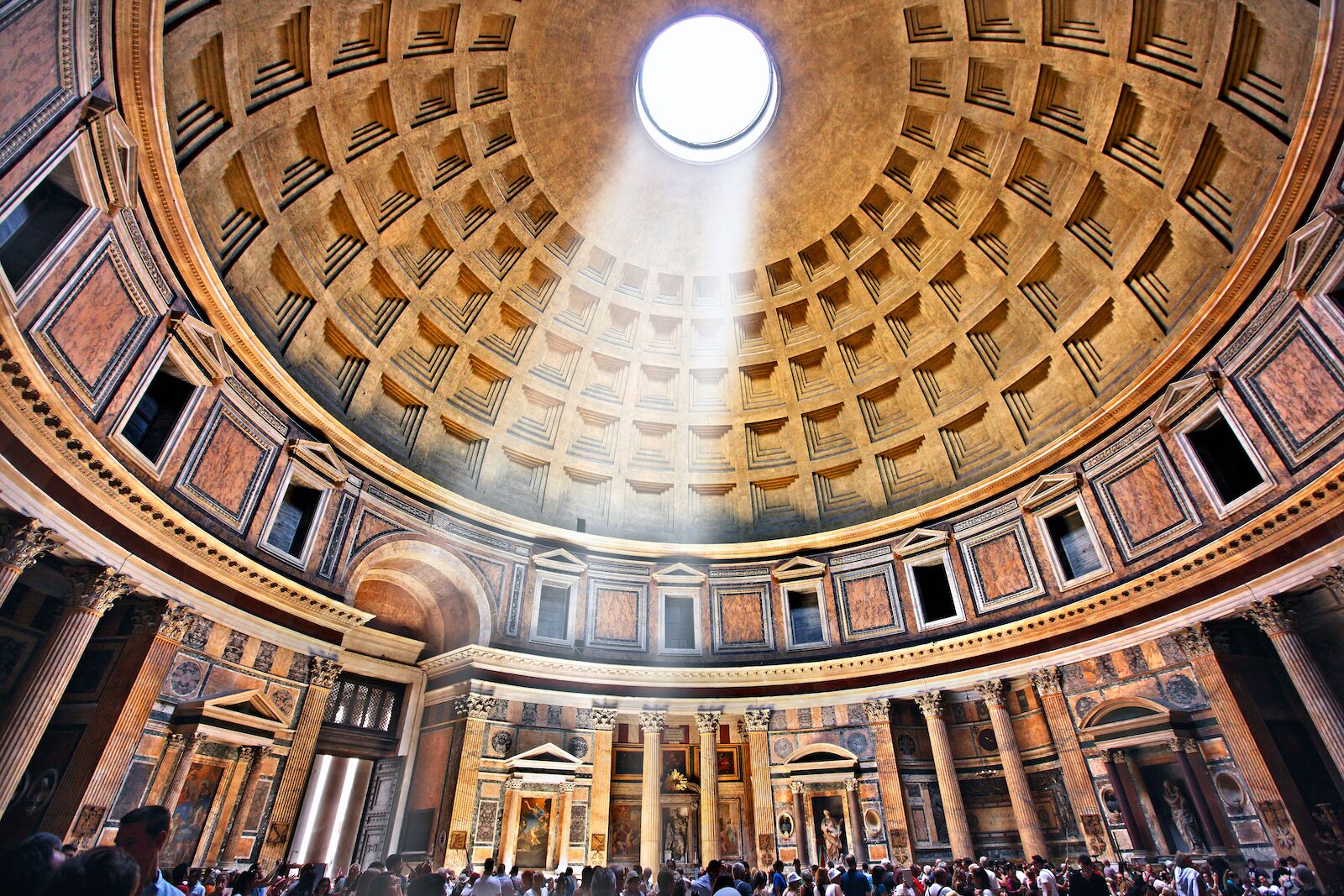
Photo: Heracles Kritikos/Shutterstock
Only seven minutes on foot from Largo di Torre Argentina, the Pantheon is a church like no other. The former Roman temple converted into a Catholic church in the year 608 is circular in shape, covered in marble, and its immense dome has a large and most unusual oculus. Visiting the Pantheon costs €5 ($5.24); if you opt to pay by card instead of cash, you’ll skip the long line at the front.
A much-deserved stop for lunch: All’Antico Vinaio and Piazza Novana
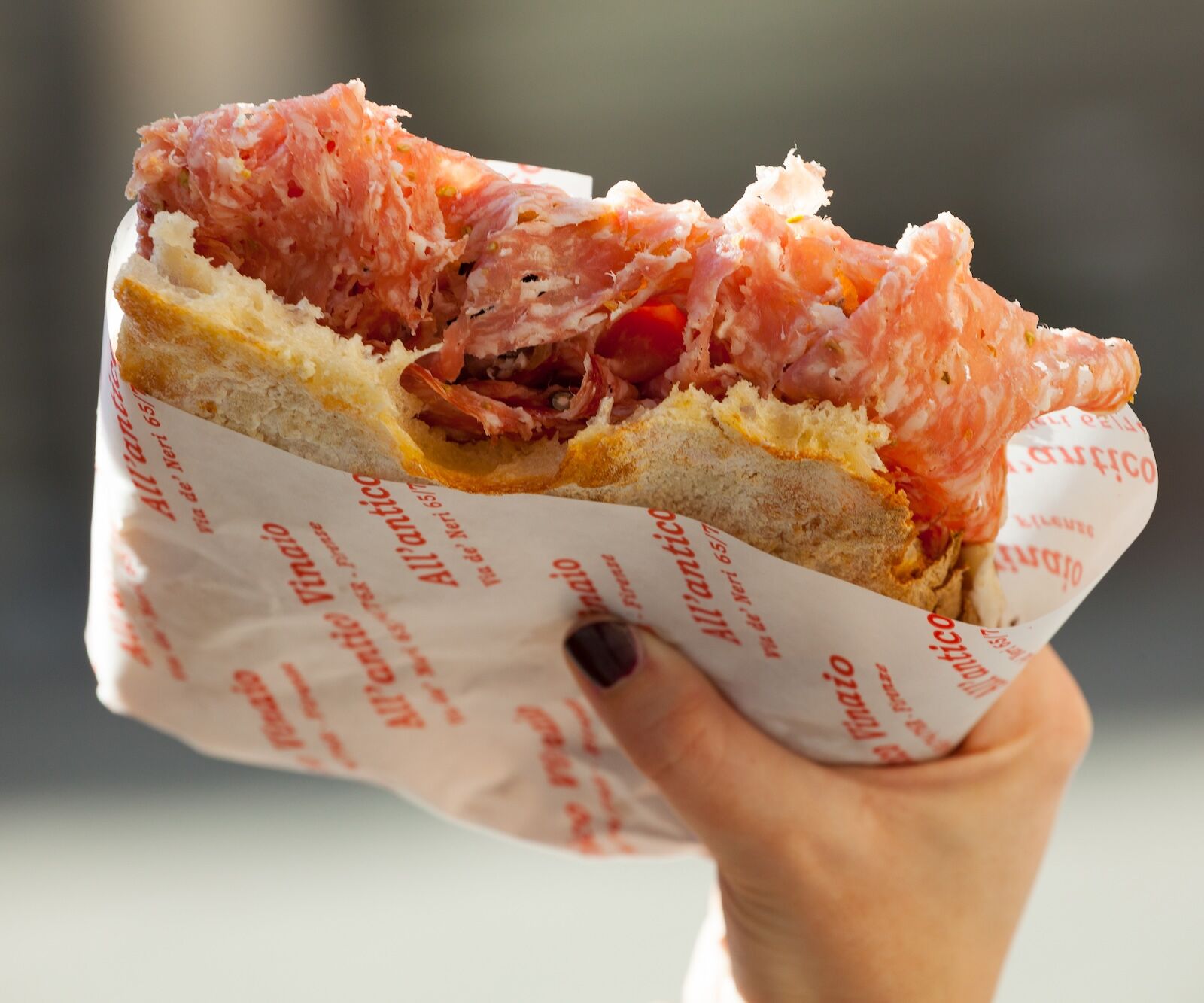
Photo: Antonio Gravante/Shutterstock
After all this walking, it’s time for sustenance. Join the long, but fast-moving, line in front of All’Antico Vinaio, located just two minutes from the Pantheon, for a large, creamy, and packed focaccia sandwich you won’t soon forget. While meat, especially pork, is the focus, there are dozens of options, including some for vegetarians with pistachio cream, mozzarella, and sundried tomatoes. Note that there are no tables and seats at this venue; once you get your sandwich, you can walk a few minutes to Piazza Novana and find a seat on the edge of a fountain, a bench, or a few steps. Piazza Novana, a oval-shaped square where an ancient stadium once stood, is adorned by three magnificent fountains, all of which are worth taking the time to admire.
Gelato for desert at Frigidarium
No walking tour of Rome would be complete without a quick stop at a gelateria. If you still have room for desert after your supersized sandwich, make your way to Frigidarium, just three minutes away from Piazza Novana. The shop, here since 1988, serves delicious gelato for a very reasonable price — just €5 ($5.25) for three flavors in a cup.
Sant’Angelo Bridge, Castel Sant’Angelo, and the Vatican
If you still have any energy left after this long day of walking between historical sights, cross the River Tiber via the famous second-century Sant’Angelo Bridge. St. Angelo Bridge leads to Castel Sant’Angelo, the circular mausoleum of Emperor Hadrian, and a sight to behold. Note that there is a public bathroom near Castel Sant’Angelo on the way to Vatican City, and you should make good use of it since it might be the last one you encounter for the day — just make sure you have some cash to give the attendant who keeps the facilities spotless.
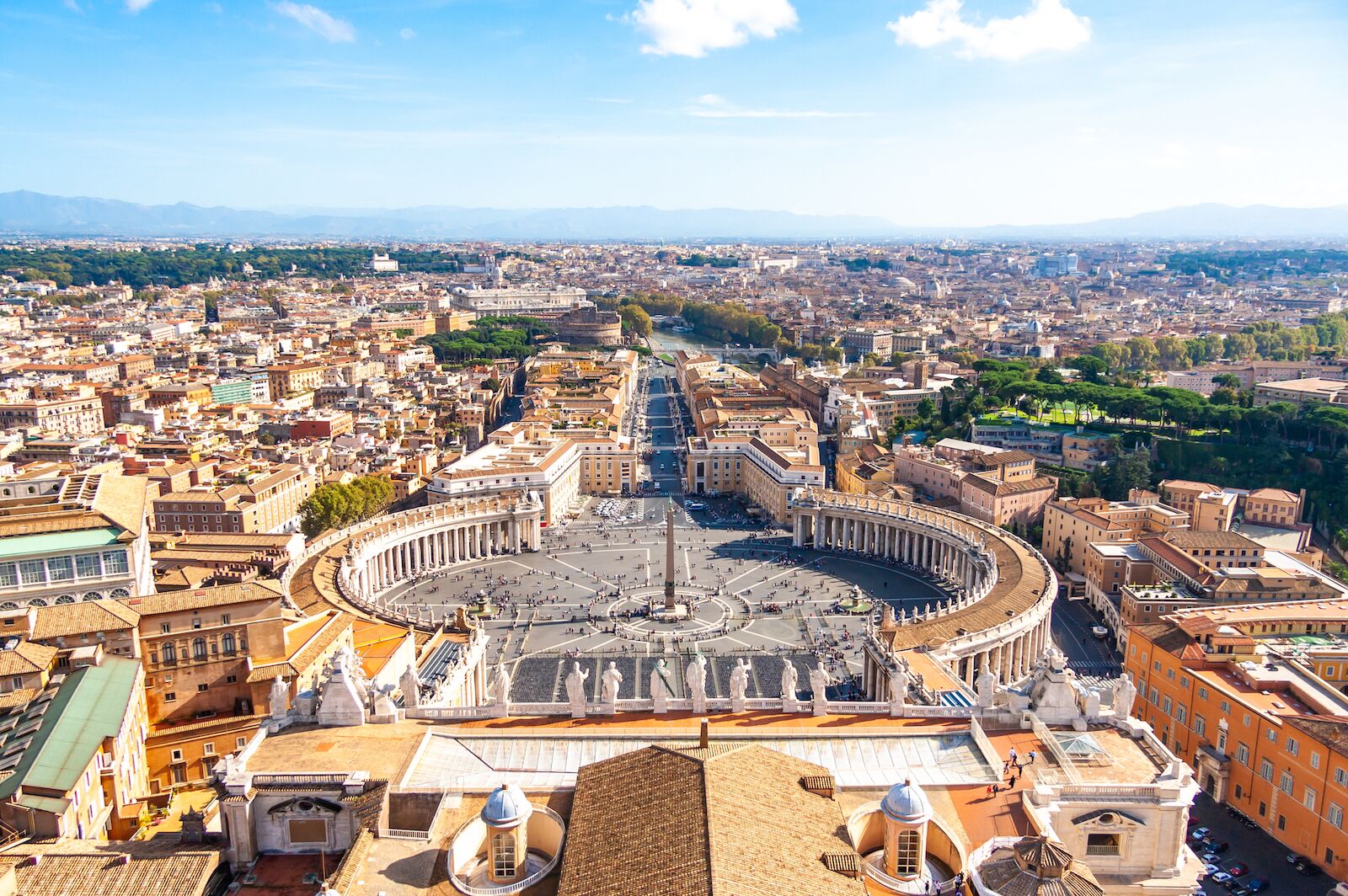
Photo: Nakasaku/Shutterstock
From Castel Sant’Angelo to St. Peter’s Basilica is a 13-minute walk, but if you want to see the biggest church in the world, you have to put in some efforts. The line to get in St. Peter’s Basilica is long and requires a security check, but it moves very fast. Although, if you are short on time, you might have to see it from the outside only. Entry is free, but you need to be dressed modestly to enter, i.e. no short shorts and tank tops. Inside, the space is so large and ornate that it’s easily to believe this is the center of the Catholic world. The Vatican’s post office on St. Peter’s Square is a good place to send a postcard home if you have the time.
From St. Peter’s Basilica, it’s a 30-minute walk back to Piazza del Popolo. Make sure you’re on time or the bus will leave without you, and so will the cruise ship.